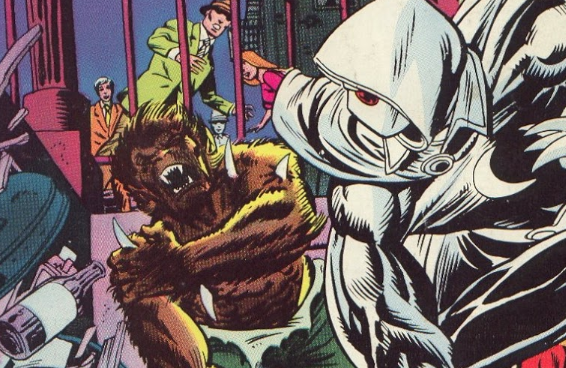
(EDITOR’S NOTE: Paint Monk’s Library, in collaboration with the enthusiastic fans over at the Into the Knight Podcast, is tackling the Moon Knight chronology! Each week we’ll take an in-depth look at the Fist Of Khonshu in a series of reviews, all in order of character appearance! These reviews will appear on Monday each week until we’ve covered them all, or until the enthusiastic Loonies get too exhausted to write, whichever comes first!)
By RUSSELL MORAN – Guest Writer
In 1975, writer Doug Moench and artist Don Perlin brought life to a character they intended to be a villainous foil for Werewolf By Night Jack Russell. Little did they know, that villain would blossom into one of the most complex, creative, and downright crazy heroes the Marvel universe had ever birthed. This is the debut of The Fist of Khonshu himself, Moon Knight, although his personality bears little resemblance to the Marc Spector we would grow to love…
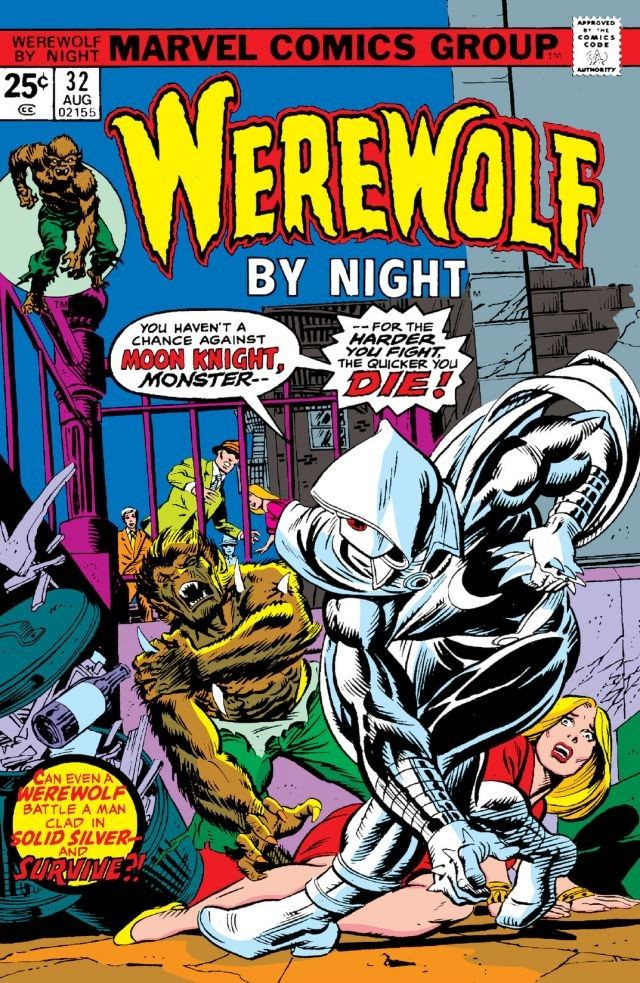
REVIEW: Werewolf by Night 32
We begin the issue with our bone-crushing duel already in progress. Jack Russell has once again succumbed to his lycanthropic curse, only this time he’s the victim. Weakened and outmatched, the werewolf is helpless against this mysterious new foe called The Moon Knight. Armed with a plethora of werewolf-slaying gear, including a cestus, a truncheon, and the now-iconic crescent darts, it looks like our monstrous “hero” is at his end.
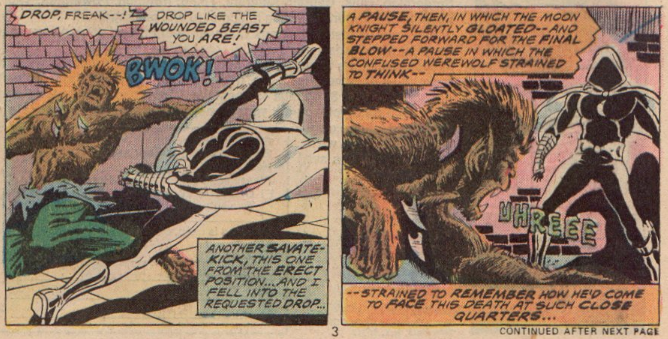
As our werewolf’s apparent end draws near, we flashback to the previous night’s events. Jack’s best friend Buck is mauled by the werewolf after heroically saving a young girl named Buttons. Buck is rushed to the emergency room in critical condition. Later that morning, Jack regresses back into human form injured and confused and begins searching for his ill-fated friend. Upon returning home, Jack’s stepfather tells his stepson of Buck’s peril. Buck has slipped into a coma, and he may never recover. Jack is distraught with these macabre events and once again returns home. This ends up being a mistake.
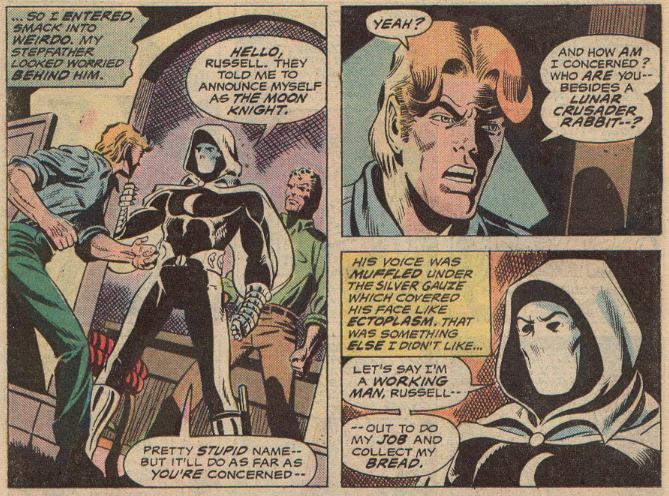
The Moon Knight is waiting for Jack. We learn he is a mercenary named Marc Spector, hired by the devious Committee to hunt and kill the werewolf. The Committee has provided the suit and the arsenal to take down the creature of the night. Jack’s stepfather distracts Spector long enough for his son to escape, but not for long.
Jack stumbles into a crowded alleyway and once again is tormented by his dreaded metamorphosis into the Werewolf by Night. But Moon Knight is not far behind, tailing the beast in his mooncopter. The battle begins, but it’s one-sided – a squash match, if you will.
Elsewhere, Frenchie (his first appearance!) kidnaps Jack’s sister and his friend. The battle rages on, with Moon Knight practically begging the beast to stay down. But this is a werewolf we are talking about; apparently they don’t know when to quit. Jack lands a mighty right hook with his broken hand on the lunar assassin, but it just isn’t enough. The werewolf is in captivity and his conqueror is Moon Knight.
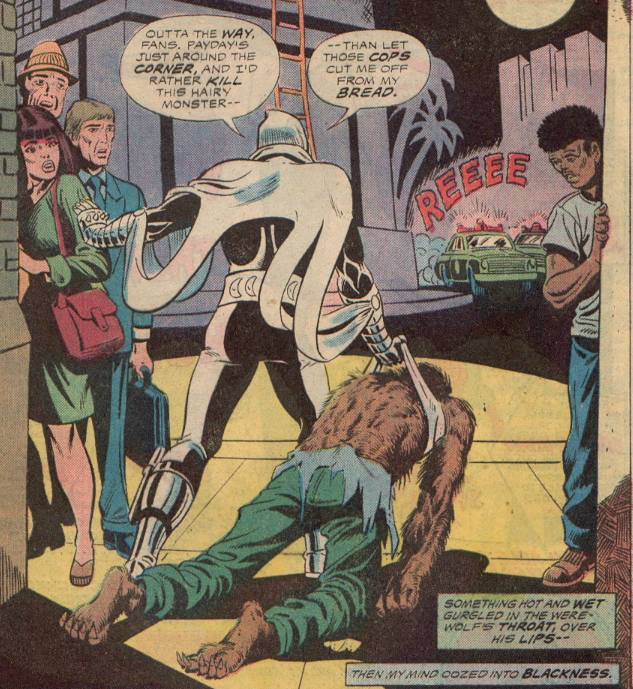
CAPSULE REVIEW: Doug Moench and Don Perlin do a masterful job with this book. The writing is smart, but also very basic in that it’s very easy and enjoyable to read. I enjoy Moench’s almost self-awareness in this story, making a few remarks that border on being breaking the “fourth wall”. He weaves a tale that gets you to care about its characters, keeps you guessing on what’s coming next, and evokes sympathy for the title character. His introduction to Moon Knight is stellar; he’s immediately a force to be reckoned with and that’s complemented by Perlin’s fantastic art.
Don Perlin was one of the best illustrators of his time, and this issue really lets him shine. The Werewolf is scary, but not too scary – he is the “hero” after all. Moon Knight’s early design here is effective, but somewhat lacking, especially in the face. My favorite part of this issue is the wonderful fight choreography Perlin crafts. I’m a big fan of good dialogue and drama, but sometimes, I just wanna see the good guy and the bad guy just have a slugfest. This is something most comics lack, but this issue has in droves. It perfectly balances action and narrative.
The colorist on this issue is Phil Rache and he helps define Moon Knight here for his debut. The issue is very colorful – the werewolf jumps off the page with his bright green pants. The backgrounds are vibrant, and the cast of characters catch the eye. And then there’s Moon Knight, nothing but white and black. It works so well, he stands out most of all by lacking the most color. He shines in every panel he’s in.
I mentioned earlier that this is very different from the Moon Knight we would come to know later. And that’s mostly because a lot of this issue is retconned away in Moon Knight (Vol. 1) #1 (also by Moench). However, staples of Moon Knight’s character are brilliantly defined in this first appearance. We know immediately that Moon Knight’s real name is Marc Spector; Moon Knight has battle experience and worked as a mercenary; he has a pal named Frenchie (although he is literally unrecognizable as the character we know today) and finally, he has a host of gadgets and weaponry and is a force to be reckoned with.
All in all, I really enjoyed this issue. It’s a fun ride, with likable characters and a perfect spotlight on a brand-new rogue for the werewolf to battle. The only things I really felt dragged were some of the extended hospital scenes and a side plot involving Raymond Coker.
I can’t really fault the book for that because it involves characters I’m unfamiliar with but readers at the time were not. This issue is effective, and the story and art sucked me right in. I knew the werewolf was going to be okay, but for a moment there, I really thought “My goodness, Moon Knight is going to kill poor Jack!” I’d recommend this book for sure. It’s a nice taste of what’s to come
On a scale of 1-5, Moon Knight’s debut appearance in Werewolf By Night #32 earns a 4.


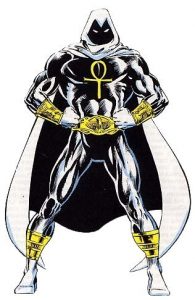




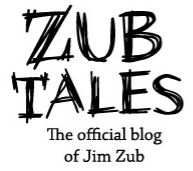

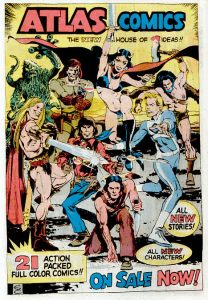

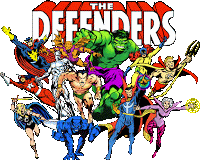
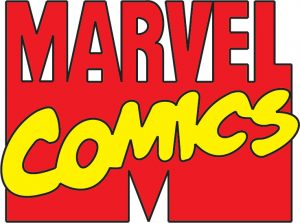

 January 6th, 2020
January 6th, 2020 

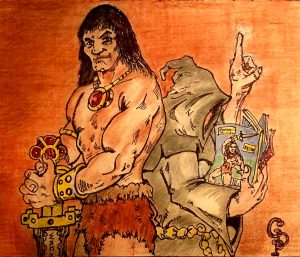


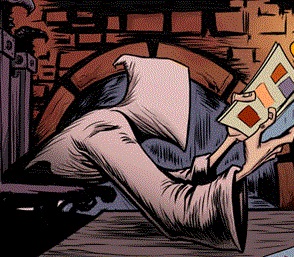
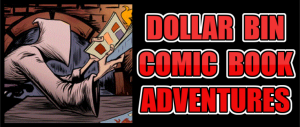
The Lost Art of Horror (and Writing) – Part III of III
By WALLY MONK – PM Library Editor
I’ve talked about the Comics Code Authority before, and how I believe it really forced writers and artists to hone their storytelling abilities. I’ve even said that I genuinely miss the CCA stamp on the front of comic books today.
As I read the Tomb of Dracula series (1972-1972) by Marvel Comics in its entirety over the last six months (yes, I am a busy monk and it took that long), I realize exactly why the CCA was necessary – and why it made things even more horrific in many ways. Before we talk about the actual comic, let’s talk about psychology. When people see a picture, they know exactlywhat they are looking at – and it either makes them feel a certain way, or it doesn’t. But when people are read a narrative, it allows their mind to wander. Let’s take two examples:
COMIC PANEL EXAMPLE 1: (Robert is lying in bed, and underneath the bed, hidden in shadows, the reader sees a monster – drooling and with massive teeth – looking up at the unknowing soon-to-be-victim. A pool of ichor that Robert can’t see is starting to come out from beneath where the monster is crouched.) Text: He knew something was there, but he didn’t know what it was. His heart began to race, and something deep inside told him that he would not see the morning.
COMIC PANEL EXAMPLE 2: (A close up of Robert’s face, focusing on his eyes. His face is contorted in terror, and his eyes are wide. We see his head rests on a pillow. Artist should focus on the whites of the eyes and the lines in his forehead – he is obviously terrified.) Text: He knew something was there, but he didn’t know what it was. His heart began to race, and something deep inside told him that he would not see the morning.
What exactly IS the terrifying creature in the closet? Use your imagination.
In the first example, the artist rendering of the “monster under the bed” might be scary to the reader, or it might not. If the reader isn’t frightened by it – or at least understanding why the character in the comic is frightened – then the whole mood just falls apart. The second example allows the reader to imagine something that might frighten them also. It’s the same reason Herman Melville’s classic Moby Dick doesn’t work as a movie (IMHO) – it’s more frightening to imagine Ahab’s obsession and the murky depths of the ocean than to see a CGI whale that doesn’t necessarily hit a viewer’s panic button.
Tomb of Dracula, what has become in many ways the curve-wrecker of the comic book horror genre, is full of these moments. Overall, it is a brilliantly written series of horror comics that capitalize on implied fear while making sure that the visuals are pretty terrifying themselves.
Issues individually are moderately pricey in excellent or better condition. The full-color Omnibus editions, especially Vol. 1, sell for hundreds of dollars. The value of Tomb of Dracula, both in the comic medium and as a story telling mechanism, is huge. Few comic books tell stories this way any more.
Tomb of Dracula was created by Marvel in the 1970s after the Comics Code Authority relaxed their restrictions a bit. Famous writers ranging from Gerry Conway, Gardner Fox, Roy Thomas and Archie Goodwin all worked on the book in its first year, until the final team of Marv Wolfman and Gene Colan were brought together in issue #7. They would work together until the end of the series run with issue #70. In fact, Colan drew all of the issues from issue #1 until the bitter end, a very unusual move for the industry and a good reason perhaps that the series was so successful.
Comics Bulletin in 2010 ranked the Colan/Wolfman run on Tomb of Dracula at #5 on their “Top 10 List of 1970s Marvel Comics.” Throughout the run, Dracula would ally himself (occasionally) with heroes to defeat a greater evil – but more often than not, he was the antagonist of such heroes and groups as The Uncanny X-Men, Spider-Man and Werewolf by Night.
So if all this true, why isn’t it a good idea for kids to read Tomb of Dracula – especially if it’s a perfect example of good storytelling? After all, it’s approved by the now-defunct CCA and comics are for kids anyway, right? Why is our friend the Paint Monk putting a warning label on this series and recommending it for mature audiences?
The most abhorrent twist to the series – and it is dangerously subtle, a testament to how it is written and put together – is that Marvel Comics successfully has fans of Tomb of Dracula “rooting” for the bad guy, for the “Lord of Darkness.”
Think about that for a moment – and be truly afraid.
As always, I am – Wally (AKA Paint Monk)